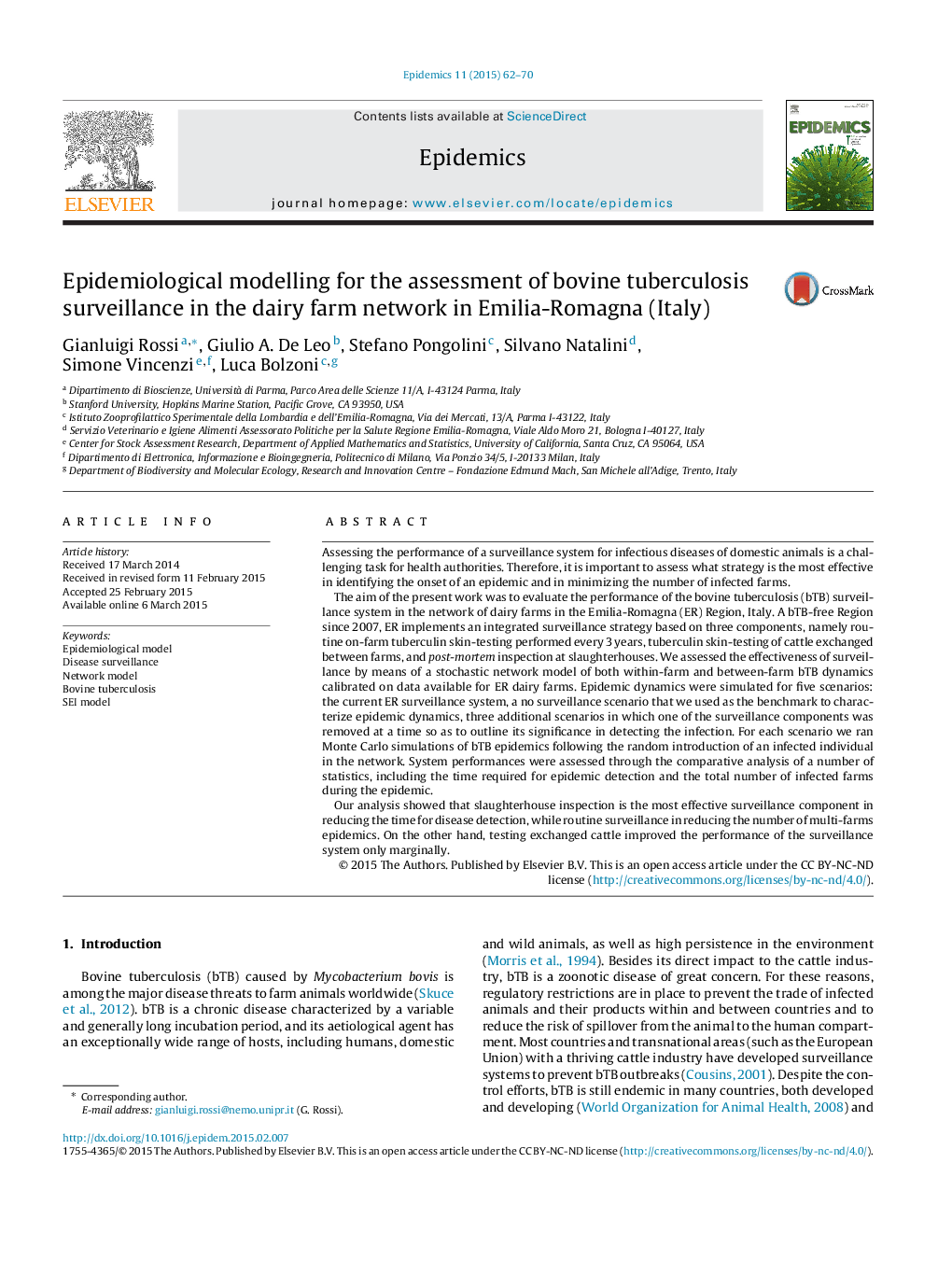| کد مقاله | کد نشریه | سال انتشار | مقاله انگلیسی | نسخه تمام متن |
|---|---|---|---|---|
| 2813557 | 1569436 | 2015 | 9 صفحه PDF | دانلود رایگان |
• We created a bTB infection model including both within- and between-farm dynamics.
• We assessed the surveillance system effectiveness through bTB spread simulations.
• Routine on-farm and slaughterhouse inspection surveillances are the most effective.
• Exchanged cattle testing marginally effective in bTB epidemics detection.
Assessing the performance of a surveillance system for infectious diseases of domestic animals is a challenging task for health authorities. Therefore, it is important to assess what strategy is the most effective in identifying the onset of an epidemic and in minimizing the number of infected farms.The aim of the present work was to evaluate the performance of the bovine tuberculosis (bTB) surveillance system in the network of dairy farms in the Emilia-Romagna (ER) Region, Italy. A bTB-free Region since 2007, ER implements an integrated surveillance strategy based on three components, namely routine on-farm tuberculin skin-testing performed every 3 years, tuberculin skin-testing of cattle exchanged between farms, and post-mortem inspection at slaughterhouses. We assessed the effectiveness of surveillance by means of a stochastic network model of both within-farm and between-farm bTB dynamics calibrated on data available for ER dairy farms. Epidemic dynamics were simulated for five scenarios: the current ER surveillance system, a no surveillance scenario that we used as the benchmark to characterize epidemic dynamics, three additional scenarios in which one of the surveillance components was removed at a time so as to outline its significance in detecting the infection. For each scenario we ran Monte Carlo simulations of bTB epidemics following the random introduction of an infected individual in the network. System performances were assessed through the comparative analysis of a number of statistics, including the time required for epidemic detection and the total number of infected farms during the epidemic.Our analysis showed that slaughterhouse inspection is the most effective surveillance component in reducing the time for disease detection, while routine surveillance in reducing the number of multi-farms epidemics. On the other hand, testing exchanged cattle improved the performance of the surveillance system only marginally.
Journal: Epidemics - Volume 11, June 2015, Pages 62–70
